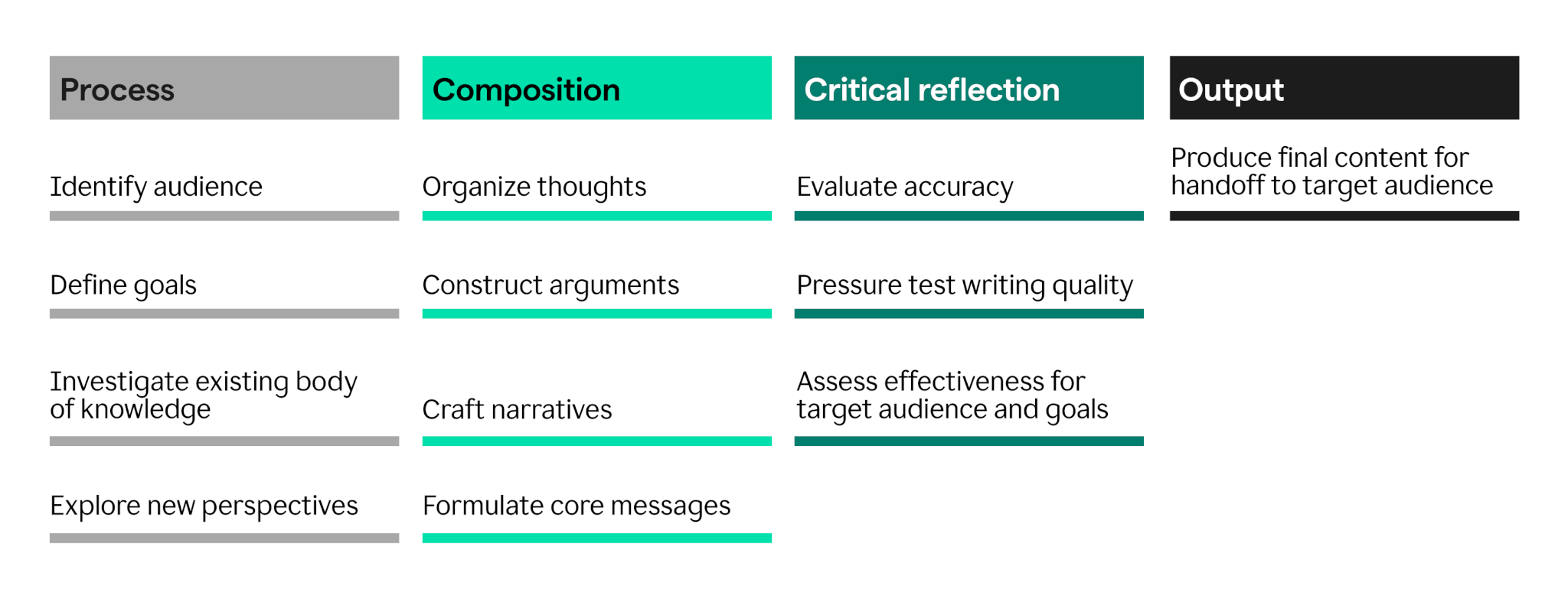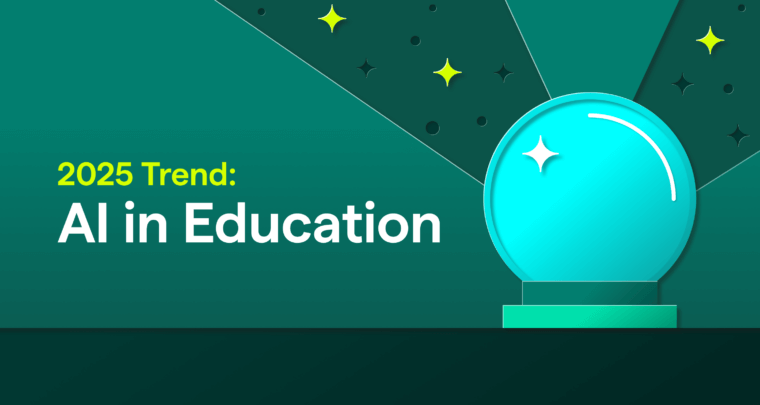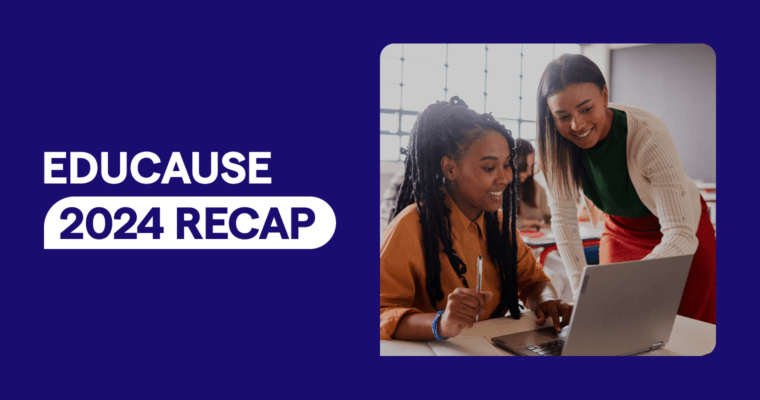
College graduates with AI capital—that is, proven experience using AI—on their résumés were far more likely to land job interviews than those without, as reported by Higher Ed Dive. Furthermore, graduates with AI capital not only scheduled more interviews than those without AI capital, but they also landed interviews for jobs with higher wages than those jobs that did not require AI proficiencies.
To be truly prepared for the modern workplace, students need to possess durable soft skills, be agile communicators both orally and in writing, and be AI literate with a disposition toward lifelong learning. Here are nine strategies higher education institutions can implement today to both develop AI-literate graduates and build an institutional reputation for producing these workforce-ready professionals.
1. Curriculum mapping
AI literacy is a technical proficiency that needs to be deeply woven into general education studies. Communication, critical thinking, problem-solving, and ethical reasoning are general education skills that must be embedded into domain-specific curricula. While AI warrants the creation of new courses, minors, and majors, it more immediately warrants the reimagination of campus-wide curriculum to create an experience where students are learning alongside AI. That is how students will be prepared for working alongside AI in their future careers.
2. Assignment deconstruction
As authors José Antonio Bowen and C. Edward Watson write in their 2024 book, Teaching With AI: A Practical Guide to a New Era of Human Learning, “All assignments are now AI assignments.” This means educators need to reevaluate how they grade assignments. “No one is going to hire a student who can only do ‘C’ work if an AI can do it more cheaply,” they write. “We will need to define what ‘better than AI’ work looks like.”
As part of this exercise, all faculty should place each of their assignments into AI and ask it to complete the work. Faculty should use the paid, not free, versions of the latest AI tools to get a realistic understanding of just how good AI has become at completing many types of work. Gen AI output will give faculty a baseline for work that should now be considered C level or lower. Knowing this baseline, faculty need to determine what “better than AI” work looks like and deconstruct assignments to better assess the various human contributions and human-AI collaboration points that an assignment comprises—as opposed to evaluating just the assignment’s output.
In writing assignments this can be done by evaluating student competencies in each of the four stages—process, composition, critical reflection, and output—and substages of the writing process detailed in Grammarly’s The Future of Writing report.

3. Transparent and living policies
Watson, who is also the vice president of digital innovation at AAC&U, states that “one of the biggest challenges of AI is that students often don’t know when they are cheating and when they are not.” This forces students to operate in an unproductive state of guessing, wondering if they are developing AI skills in the best way while trying to not run afoul of their institution’s academic integrity standards. Policies in the age of AI will most likely need to expand to include not just traditional campus-wide academic integrity and responsible use policies, but also assignment-specific policies. As educators reevaluate assignments and grading to take a more granular approach, policies that set specific expectations for new forms of coursework will be necessary.
With the state of gen AI and the workplace shifting so rapidly, these policies should be evaluated and refreshed multiple times a year. This will require maintaining review committees that do not disband immediately after a policy is launched but instead reconvene regularly to ensure policies are evolving alongside the skills they are trying to engender.
Webinar: The Employability Equation: How to Equip Graduates With Skills That Endure in an AI-Oriented Future
4. Alumni boards, student councils, industry partnerships, and faculty committees
Technology, workplace trends, and employer expectations are shifting faster than any one person or group can monitor. To keep pace, institutions should create as many always-on, regularly synchronized information streams as possible. These will most likely be in the form of human committees across student, faculty, and alumni bodies.
- Alumni advisory boards offer unparalleled insight into how well the curriculum prepares students for the real world and how specific career paths are evolving.
- Student councils are an essential feedback loop that offer educators and administrators candid feedback on student confidence in their career preparedness.
- Faculty committees are the engines of change across institutions. Comprising cross-functional, cross-disciplinary staff and faculty, they listen, reflect, and act on the insights gathered from alumni, students, and industry partnerships.
5. Employer engagement and industry partnerships
Employer and industry partnerships have long informed institutions’ career-readiness strategies. Gen AI impels educators to reevaluate these engagements to ensure they include early adopters of gen AI. As the workplace rapidly shifts around gen AI, institutions should consider increasing the frequency and formats of employer engagement. Résumé and interview feedback from employers is also growing in importance. Understanding how employers prioritize and interpret gen AI skills on résumés will be instrumental in helping students best represent their skills. Similarly, graduates will need coaching on how to articulate both their AI competencies and soft skills in increasingly longer and more multifaceted interview processes that often include panel sessions, presentations, and assignments.
6. Increase access to AI tools; standardize the right ones
AI literacy is an applied, not theoretical, skill. To become proficient with gen AI, students need hands-on experience with the technology in real work scenarios. Broad familiarity with a range of AI tools is also necessary. The gen AI technology space is evolving so rapidly that over-indexing on any one tool may provide only niche or short-lived proficiencies. Institutions should provide students opportunities to use the most popular gen AI tools and large language models (LLMs) so they have a well-rounded experience that will remain relevant as gen AI tools and use cases evolve.
Institutions should also consider standardizing gen AI tools that enhance student learning and are also widely accepted in the workplace. For instance, Grammarly provides comprehensive, real-time writing support that augments and reinforces higher education instruction. It is also the trusted provider of gen AI writing and communication assistance to 70,000+ professional teams worldwide. Tools like Grammarly help students bridge the gap between the skills they acquire in higher education and the application of those skills in the professional workforce.
7. Create informed, responsible AI citizens
AI-literate students need to not only be adept at collaborating with AI but, just as importantly, be well-informed on the nature of AI tools and the LLMs that power them. Even with the latest technology advancements, gen AI is still prone to perpetuating societal biases and returning “hallucinations” that present misinformation as fact. In the workplace, security and data privacy are top concerns, requiring professionals to practice responsible AI to protect their company’s intellectual property, brand reputation, and customer data. Along with preparing students to use gen AI effectively, institutions will also need to ensure that graduates understand how to use it responsibly.
8. Double down on durable soft skills
With gen AI becoming more effective at executing work, there is an increased demand for professionals who can determine whether the AI is executing the right work and which person in the workplace can effectively move that work forward. Just as AI literacy is an applied skill, soft skills like communication, collaboration, and adaptability are as well. Students will need increased human-to-human learning opportunities to develop the soft skills that will help them fully leverage their technical skills in the real world.
9. Gen AI resources for faculty upskilling
Only 22% of faculty are using gen AI tools, while almost half (49%) of students are doing so, according to Tyton Partners’ 2023 Generative AI in Higher Education report. To understand how gen AI can and will be used in students’ future careers, faculty and staff will need to increase their familiarity with as well as hands-on use of emerging tools. As a first step toward faculty upskilling, many institutions are creating gen AI faculty resource hubs that provide 101-level instruction, examples of how others are using AI in their curriculum, and links to local and virtual AI literacy courses for continued professional development.
Example resource hubs:
- University of Michigan-Dearborn: Gen AI for Faculty
- NYU: Teaching With Generative AI
- University of Pennsylvania: Generative AI and Your Teaching
- The University of Texas at San Antonio: Generative AI Teaching and Learning
With these strategies and others like them, educators and administrators can provide students with a structured yet genuine laboratory to build AI proficiency and practice the uniquely human, durable skills that will be essential to thrive in a fast-evolving and uncertain workforce. If such techniques are applied across the sector, higher education will also reestablish itself as the quintessential environment for human interaction and engagement and the best setting to prepare for career success.






